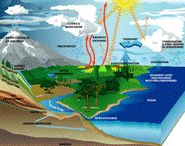Law, College of

Water Law Documents
Document Type
Article
Date of this Version
7-15-1999
Abstract
About ten years ago, the Great Lakes environmental community initiated the first action to counteract the worldwide spread of exotic organisms in ballast water. In 1988, in response to the discovery of the ruffe and the zebra mussel in the Great Lakes, the Great Lakes Fishery Commission and the International Joint Commission called upon the Canadian and United States Governments to act. In 1989, Canada issued the first voluntary ballast exchange guidelines. In 1990, the United States passed the first major piece of legislation on aquatic nuisance species, mandating consultations and studies on all pathways for aquatic invasions. And in 1993, the US Coast Guard issued the first set of mandatory regulations for controlling ballast water in the Great Lakes. The issue is now on the global agenda. The International Maritime Organization, under pressure from Canada, the United States, and Australia, has issued similar guidelines and begun to consider a mandatory international convention. The United States enacted a second major piece of legislation in 1996, making it a national issue, and Canada enacted legislation authorizing national mandatory regulations to control ballast water in 1998.
With support from the Great Lakes environmental community, and with valuable assistance from distant allies in Australia, a Great Lakes regional coalition of binational, federal, state, and provincial agencies seems to have made considerable progress on the problem of exotics in these last ten years. In terms of public education and political rhetoric, the effort has been a great success. We have seen the transformation of what was an arcane and poorly understood issue - an issue which was somewhat "exotic" in political terms even within the special culture of the environmental community - into an issue accepted as worthy of attention, even if still sometimes poorly understood, by the mainstream public and their political leadership. Moreover, the enactments of the first major pieces of legislation in the US and Canada, even if largely tentative and inchoate, have come relatively quickly in comparison to the history of legislative efforts on other forms of pollution.
But there are two reasons to be cautious about this apparent success. First, the nature of the problem is inherently acute. As a matter of biological reality, exotic invasions are irreversible. This is a form of pollution that can never be cleaned up, and new invasions compound the damage already done to a stressed ecosystem. Second, much of the progress in developing legal regimes is illusionary - or worse. Although the Great Lakes mandatory regulations issued in 1993 were an essential first step, they are fundamentally flawed. So is the design of the national regime being developed in the United States, especially because of an alteration in the terms of that legislation obtained by the shipping industry as it was rewritten from a Great Lakes to a United States regime. The international convention being negotiated at the International Maritime Organization in London sounds as though it would be a good thing. But it contains the same flaws - and one more. Under some versions of the convention under negotiation, it would prohibit the enforcement of stronger provisions enacted by national and subordinate governments. These are matters that require close attention.
Also, ballast water is not the only pathway for invasion. Although the state and provincial governments in the Great Lakes region have a wide array of legal authorities and programs for the control of exotics, they are far from being uniformly strong or consistent in their terms. There are substantial issues about some major vectors - aquaculture, bait transportation, and the aquarium trade - which beg for attention. There is an obvious need for better coordination of strategies and enforcement policies at the federal, binational, and regional levels.
Those are some of the points addressed in this paper. The purpose of this paper is also to provide a common body of facts and ideas to assist in the discussion of "exotic policy" - the public policy for dealing with the invasion of the Great Lakes by exotic organisms - at an IJC workshop to be held with the 1999 Great Lakes Water Quality Forum.(1) I attempt to sum up the essential biological, technical, legal, economic, and political aspects of this complex, newly emerging environmental issue. I try to do that in an objective and analytical manner. But I also try to be honest about my point of view, which is distinctly biased in favor of environmental conservation and the proposition that our current policies for the prevention of exotic invasions are inadequate. All that might be impossible. But I hope that this will, at least, provide a basis for stimulating discussion.


Comments
This paper has been prepared as part of the International Joint Commission Workshop on "Exotic Policy" on September 23, 1999, in Milwaukee, Wisconsin. The workshop and the white paper are cosponsored by the Great Lakes Fishery Commission and the Michigan Department of Environmental Quality Office of the Great Lakes (MDEQ OGL). Some of the research supporting the white paper was conducted as part of a project previously funded by MDEQ OGL.